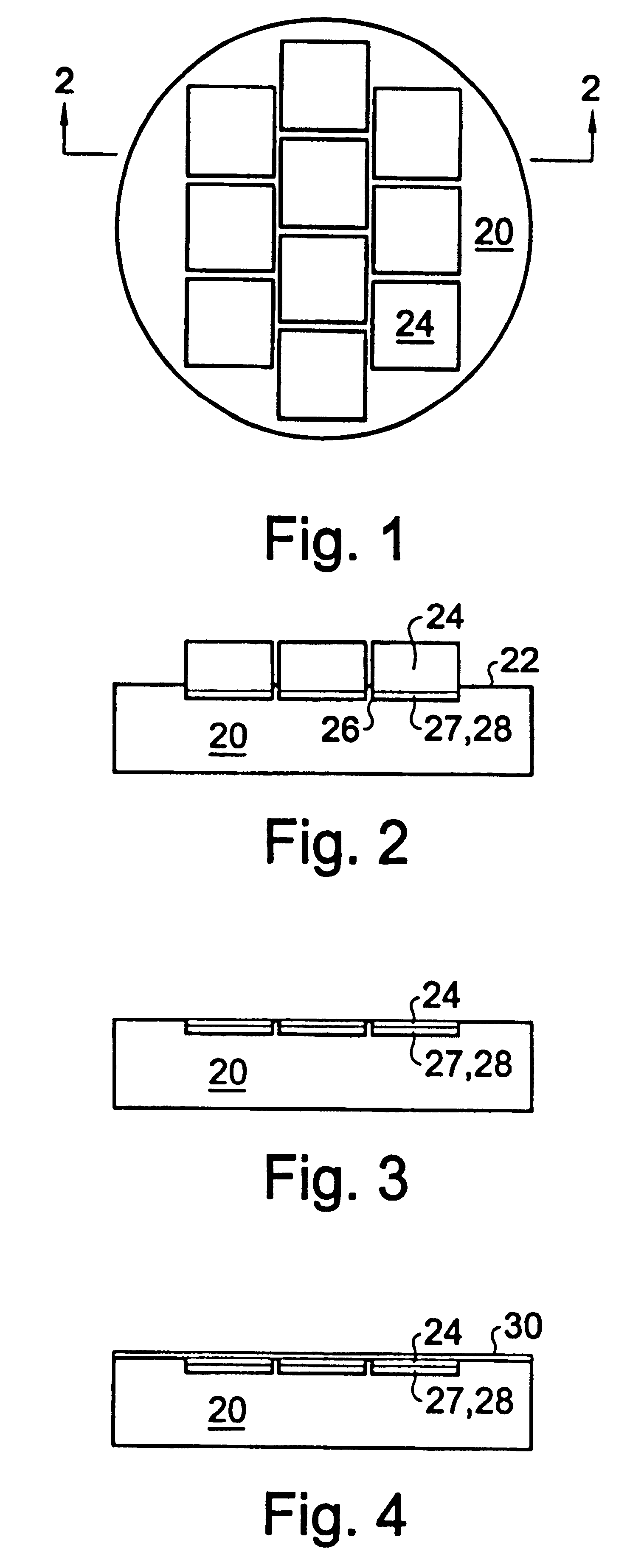Discrete wafer array process
a technology of discrete wafers and arrays, which is applied in the direction of basic electric elements, electrical equipment, and semiconductor devices, etc., can solve the problems of unreliability of commercially available silicon pressure sensors, inability to manufacture large-scale, and increased upper temperature limits, so as to achieve greater ruggedness, higher temperature conductivity, and high temperature resistance
- Summary
- Abstract
- Description
- Claims
- Application Information
AI Technical Summary
Benefits of technology
Problems solved by technology
Method used
Image
Examples
Embodiment Construction
Turning now to the drawings and more particularly to FIG. 1 we have a plan view of a large wafer 20 of substrate having a face 22 indented for an array of small wafers 24 and having the small wafers 24 matingly fitted into the depressions 26 thereon. FIG. 2 is a cross sectional view of the large wafer 20 shown in FIG. 1 taken along section line 2--2 therethrough. A method of preparing small wafers 24 for compatibility with conventional large wafer fabrication equipment (not shown) comprises the following steps: indenting a face 22 of a large wafer 20 to form an array of depressions 26 thereon, each depression 26 sized to matingly accept a lower portion of a small wafer 24; applying a bonding medium 27 to an exterior side of the depressions 26 on the indented face of the large wafer 20; matingly fitting the small wafers 24 into the depressions 26 so that the small wafers 24 are positioned in an array on the large wafer 20; and, removing the top portion of the small wafers 24 standing...
PUM
 Login to View More
Login to View More Abstract
Description
Claims
Application Information
 Login to View More
Login to View More - R&D
- Intellectual Property
- Life Sciences
- Materials
- Tech Scout
- Unparalleled Data Quality
- Higher Quality Content
- 60% Fewer Hallucinations
Browse by: Latest US Patents, China's latest patents, Technical Efficacy Thesaurus, Application Domain, Technology Topic, Popular Technical Reports.
© 2025 PatSnap. All rights reserved.Legal|Privacy policy|Modern Slavery Act Transparency Statement|Sitemap|About US| Contact US: help@patsnap.com


